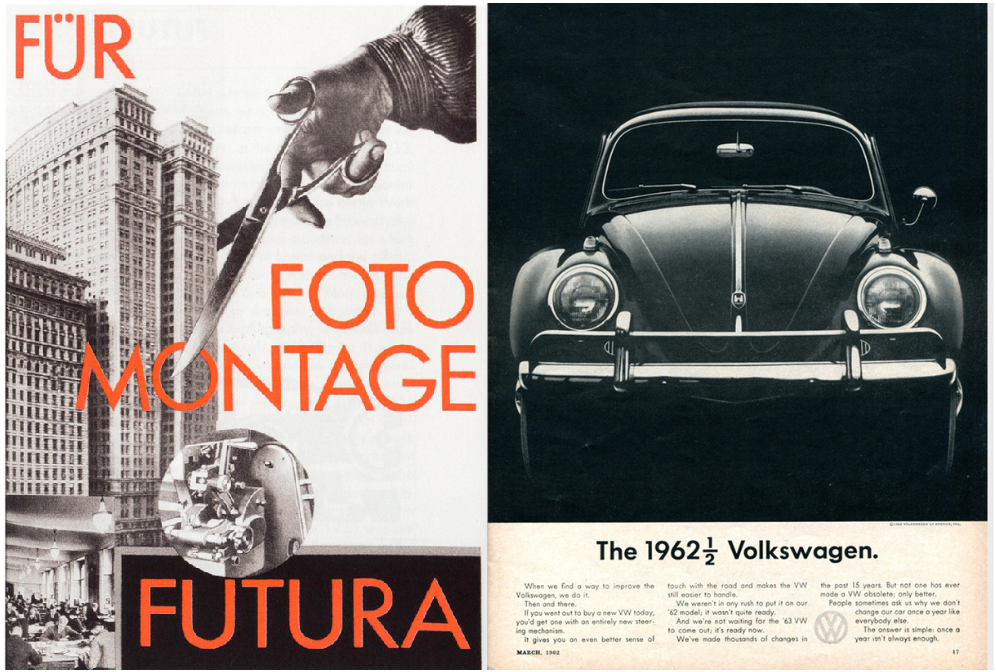Next-generation creative laptops powered by the NVIDIA GeForce RTX 3080 Ti Laptop GPU are here – and they’re faster than ever
Transform your creative workflow
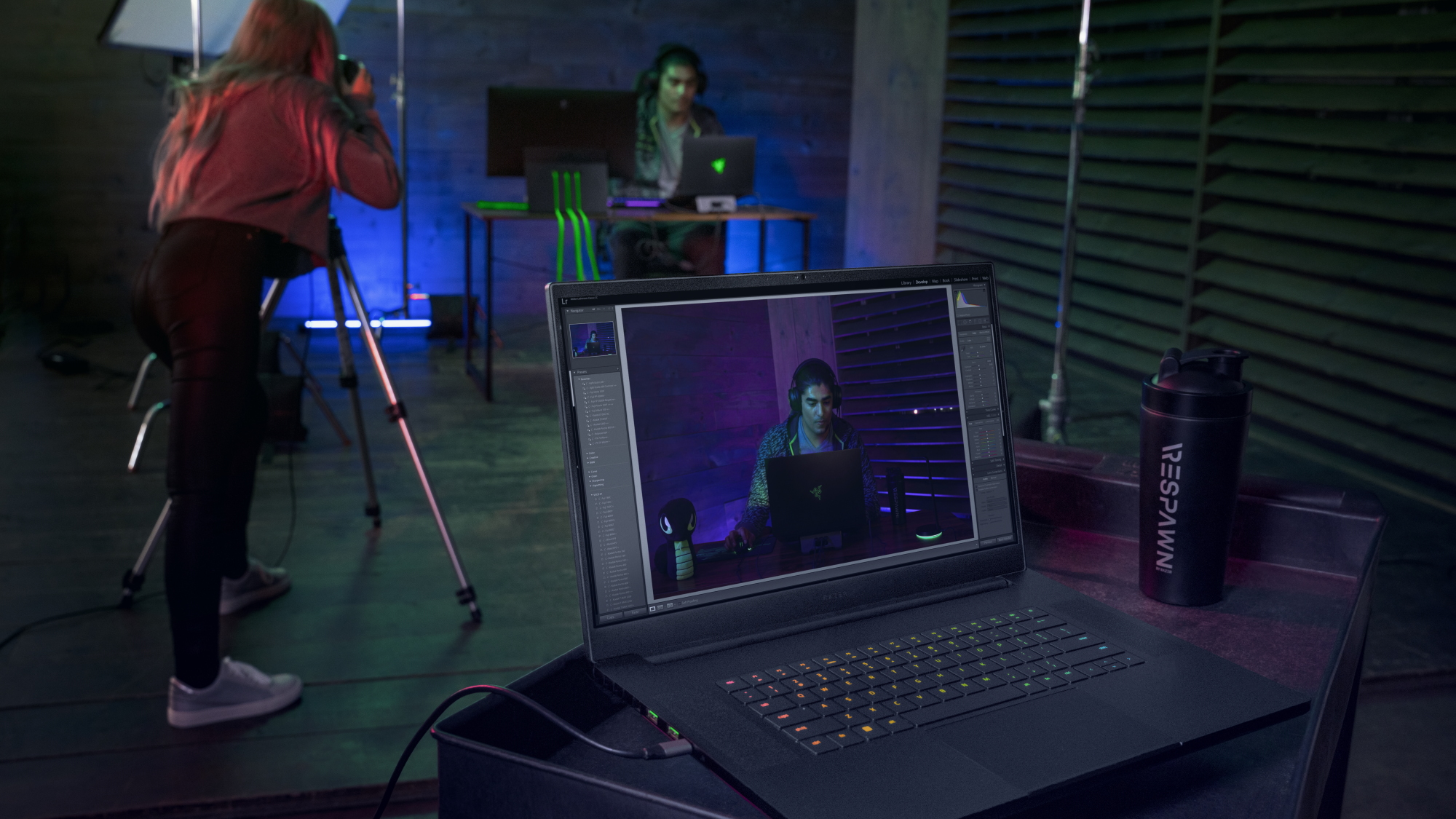
NVIDIA kicked off 2022 with a heck of a bang at this year’s CES, showcasing some seriously impressive mobile tech, including the new GeForce RTX 3080 Ti Laptop GPU with 4th Gen Max-Q, which will be driving the most powerful gaming and creative laptops money can buy.
If you’re sick of struggling with an aging laptop, dusty desktop or chunky MacBook, a new RTX 3080 Ti-equipped laptop can literally change the game. These extremely fast and powerful creative laptops allow you to blitz your way through demanding creative tasks, such as ultra-high resolution video editing and creating large, complex 3D models.
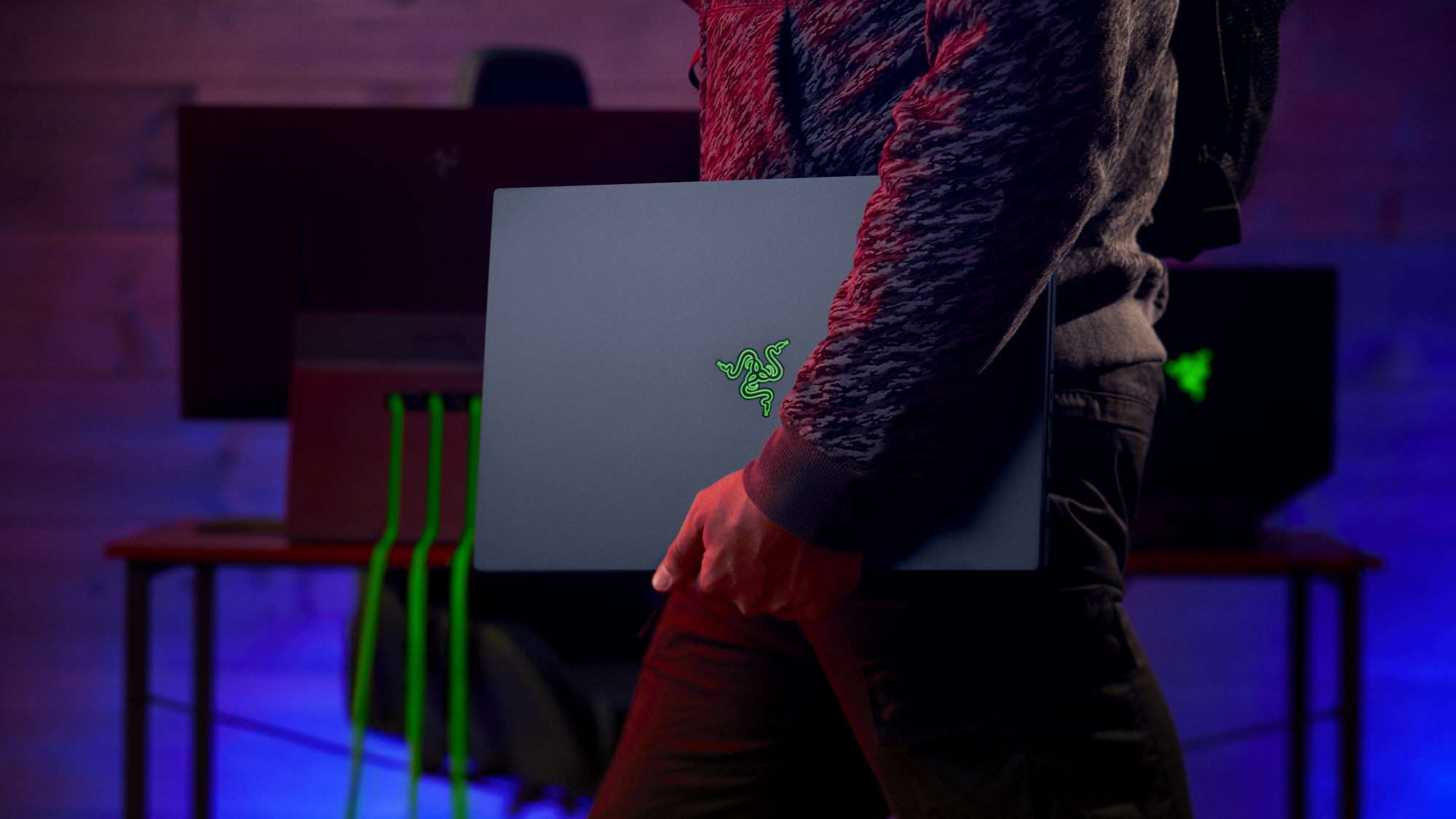
The power of Max-Q Gen 4
With new 4th Gen Max-Q features, which are found exclusively in some NVIDIA GeForce RTX 30 series-powered laptops, these creative laptops are now thinner – and more powerful – than ever, and have been finely-tuned to maximise performance when used by creators.
Keeping powerful components running cool is essential in thin and light laptops, and with Rapid Core Scaling and CPU Optimizer features, the RTX 3080 Ti laptop GPU maximises performance and efficiencies when needed.
Add in exclusive AI tools for making light work of once-repetitive tasks, and AI denoising for making ray-tracing lighting effects look even more impressive, and you have the perfect toolbox for your creativity, with common workflows now automated, you can save yourself some serious time.
With Adobe Premiere Pro, you can use the AI Auto Reframe feature to automatically track objects in your videos, and crop footage shot in landscape into aspect ratios that better suit social media – allowing you to quickly create, edit, upload and share your next viral hit.
The AI capabilities of the RTX 3080 Ti Laptop GPU can also help your images look even better. For example, Super Resolution in Adobe Photoshop, Lightroom, and Lightroom Classic harnesses the AI power of the RTX 3080 Ti (and other RTX 30 series Laptop GPUs), and uses the Tensor Cores to intelligently enlarge the size of photos without impacting image quality. So, you could use Super Resolution to increase a 10-megapixel photo to 40 megapixels, then print it for a large display without it losing sharpness or details.
Laptops powered by the brand-new GeForce RTX 3080 Ti Laptop GPU are the ideal devices for 3D creation, with 16 GB of the fastest GDDR memory you’ll currently find in a laptop. With NVIDIA’s own Studio drivers delivering maximum performance for creative applications, these laptops are capable of seven times the 3D rendering speed on average compared to the latest 16-inch MacBook Pro M1 Max.
By spending less time rendering scenes, you can dramatically increase the speed of your workflow, letting you complete projects and take on more work.
What’s more, NVIDIA Omniverse, which is now available to any Studio creator, allows you to connect multiple 3D design tools to a single scene to simultaneously create and edit between apps; and work collaboratively with another individual in real-time from anywhere in the world.
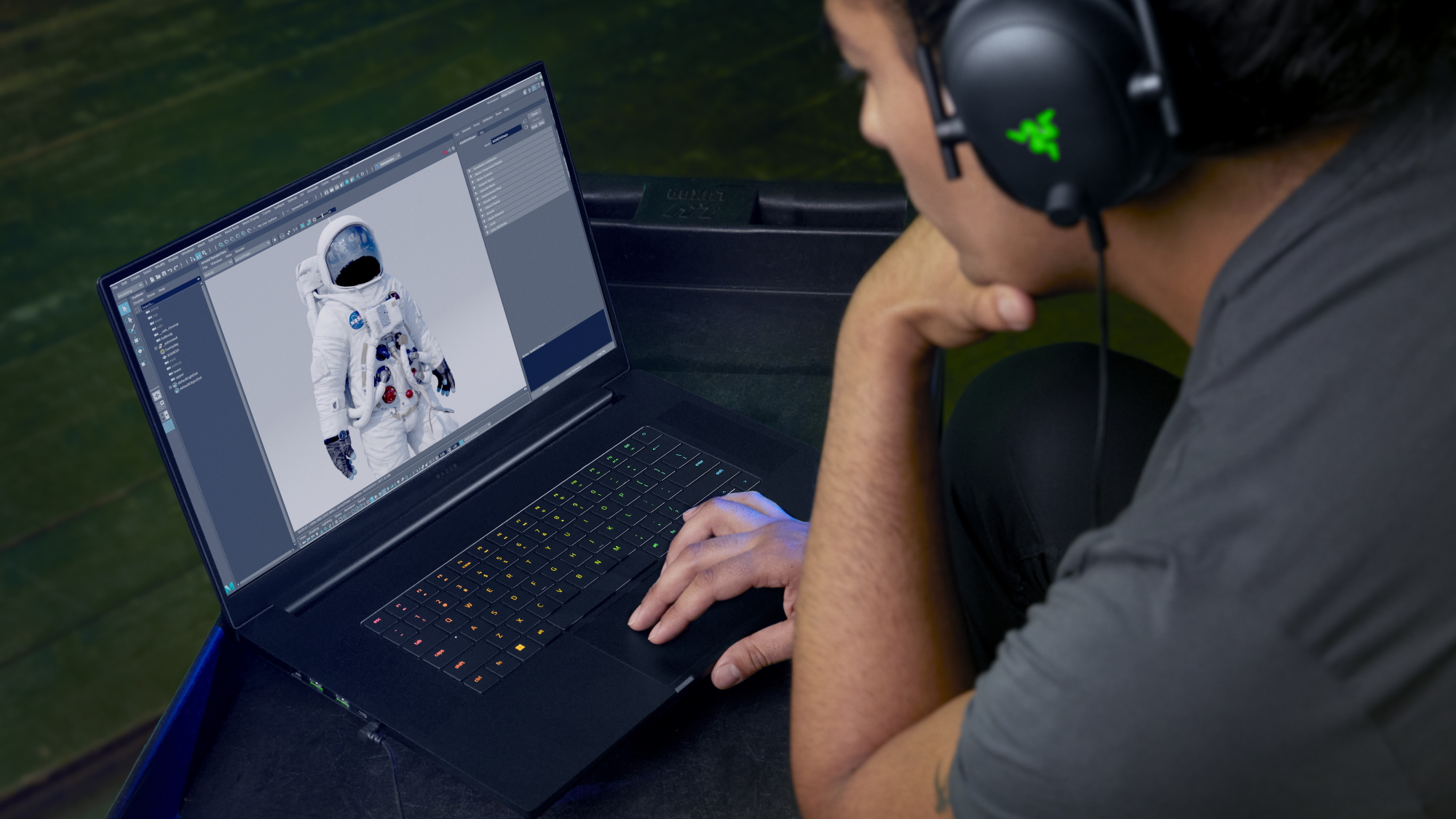
Creating with a RTX 3080 Ti-powered laptop
We’ve been given an exclusive early look at the new 4th Gen Max-Q Razer Blade 17 with the cutting-edge GeForce RTX 3080 Ti Laptop GPU, to see just what kind of an impact NVIDIA’s latest mobile tech can make to creatives.
The laptop itself is impressively stylish, thin and light considering the powerful components it houses, so forget any preconceived notions that workstation laptops need to be big and bulky. This is a laptop you’ll be able to easily carry around with you – making it ideal for digital creatives who work on the go.
With a laptop this powerful we were keen to fire up our trusted creative apps and see what it can do.
Blender
Blender is a popular open source 3D creation suite that’s completely free to use – making 3D modelling tools accessible for anyone, with tools for modelling, rigging, animation and much more. With NVIDIA OptiX accelerated rendering, final frame rendering is drastically sped up, while content creators can get real-time views of their scenes, allowing them to adjust lighting effects, including ray tracing, to make every scene look its very best.
NVIDIA RTX GPUs also support hardware accelerated motion blur in Blender, leading to better looking rendered output in less time.. This means that NVIDIA-equipped creative systems easily outperform competitors such as the latest 16-inch MacBook Pro M1 Max.
With improvements to Blender Cycles rendering in Blender 3.0, RTX rendering is now up to 2.5 times faster than before. The gap in rendering performance compared to an MacBook Pro M1 Max is also stark, highlighted in benchmark results which saw scenes rendered up to a huge 812% faster on a GeForce RTX 3080 Ti-powered laptop.
In these tests, the MacBook Pro is running Apple’s M1 Max chip, which means even the company’s latest and most expensive hardware can’t compete with the raw power of the RTX 3080 Ti Laptop GPU.
Waiting for scenes to render can be one of the most frustrating tasks when using Blender, so digital artists are always looking for ways to speed up rendering times. With RTX 3080 Ti-powered laptops, you no longer have to spend time tweaking settings in pursuit of faster render times – your Blender workloads will be drastically faster straight out of the box.
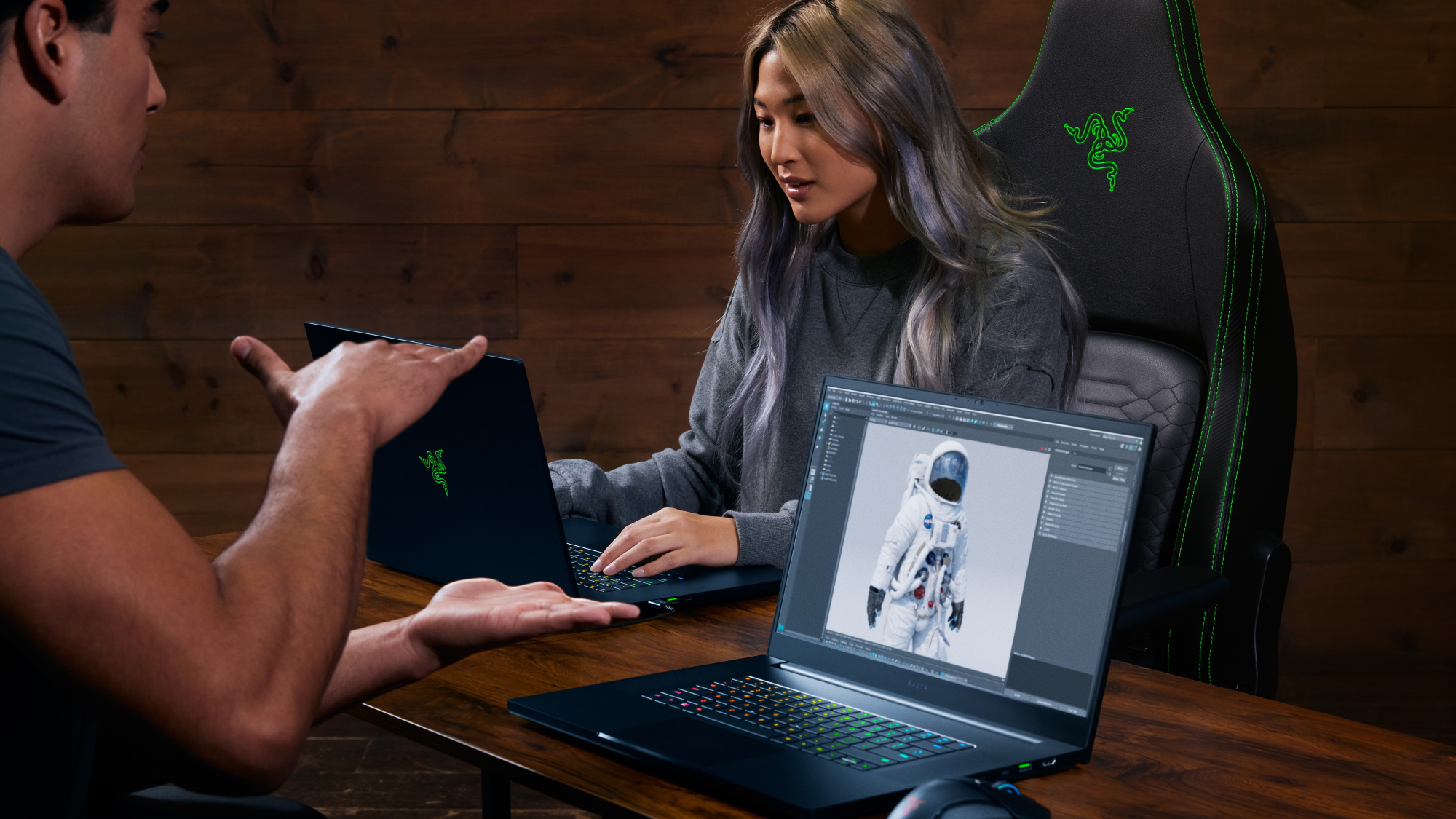
Redshift
As a powerful fully GPU-accelerated renderer that’s used for high-end production work, it may come as no surprise that this tool greatly benefits from NVIDIA’s RTX 30 Series Laptop GPUs. Even the most demanding of workflows is sped up, allowing art directors, animators and directors to tweak and interact with every scene to ensure their visions are realised.
Compared to using Redshift on an M1 MacBook Pro, a laptop running an RTX 3080 Ti offers up to 178% better performance when rendering a complex scene with Redshift. This kind of increase will have huge repercussions for your productivity, allowing you to preview and tweak scenes on the fly, and helping you to perfect your art faster than ever before.
Adobe Premiere Pro
Premiere Pro is one of the most popular video editing applications in the world, and it benefits greatly from NVIDIA hardware – especially the CUDA cores in NVIDIA’s GPUs that can seriously speed up video editing workflows.
Video encoding in Premiere Pro is also improved with NVIDIA’s dedicated NVENC encoder. By using hardware encoding you can cut the time it takes to transcode video – including ultra-high definition 4K footage.
The benefits of using NVIDIA hardware with Adobe Premiere Pro is clear in our benchmark tests, with an RTX 30-series laptop encoding 4K videos in a quarter of the time it took a modern MacBook Pro relying on software encoding.
With NVIDIA’s NVENC hardware encoder giving you up to four times the encoding speed of a MacBook, you can drastically speed up your workload in Adobe Premiere Pro.
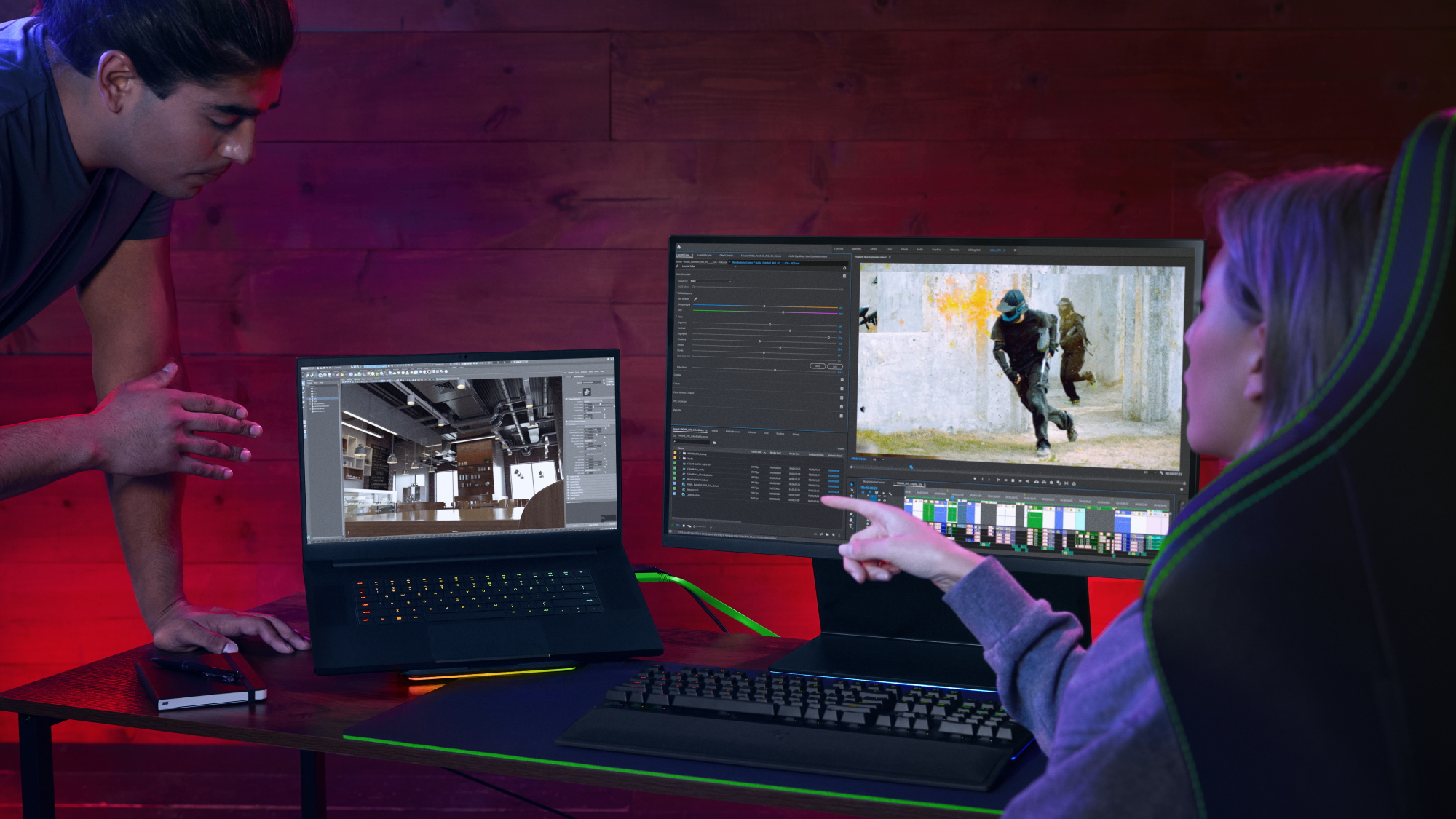
DaVinci Resolve
For video editors looking to work with intensive 8K footage, Blackmagic Design DaVinci Resolve is a key tool, offering post processing editing, colour correction, visual effects and much more. This is another popular application that also makes use of NVIDIA GPUs with CUDA technology to help accelerate its performance. With more GPU-accelerated features added to the latest version, alongside DaVinci Neural Engine, which uses machine learning to automate many processes, such as facial recognition and tracking, auto colour matching and super scaling, the new RTX 3080 Ti Laptop GPU is the perfect compliment to this software.
In benchmarks, the RTX 3080 Ti Laptop GPU offered a huge 85% performance increase when using the Super Scale feature, which intelligently upscales footage to higher resolutions, compared to the M1 Max MacBook Pro.
The performance gap was even more noticeable when using the SpeedWarp motion estimation feature, which uses machine learning to make video retiming both easier and quicker. Here, the RTX 3080 Ti Laptop GPU offered 102% better performance than the Apple MacBook Pro M1 Max.
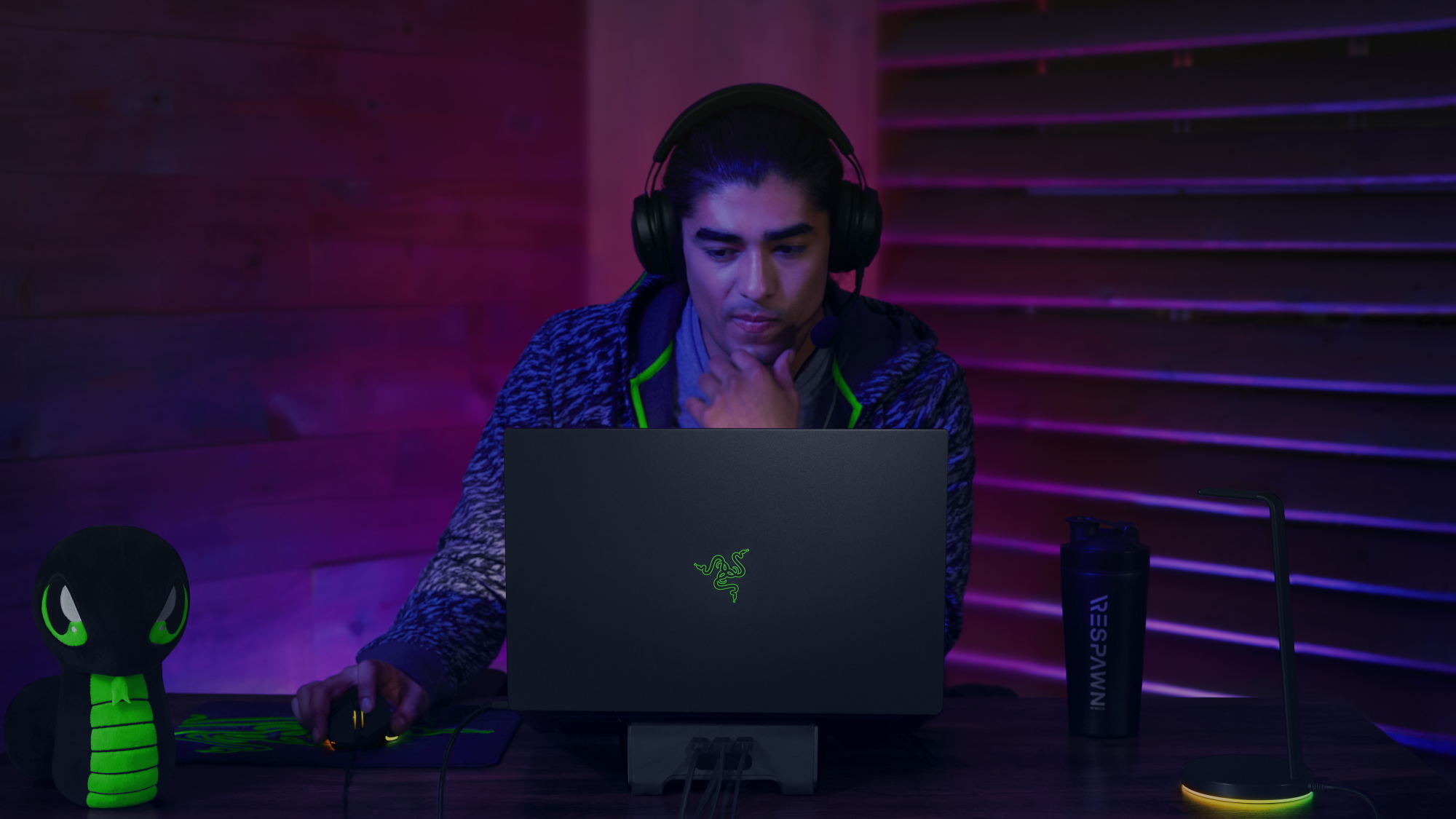
Why creatives should choose NVIDIA
Having used both the RTX 3080 Ti-powered Razer Blade 17 and the M1 Max MacBook Pro 16-inch, the difference in performance, especially when rendering scenes, was certainly impressive. The power of the NVIDIA RTX 3080 Ti meant we spent less time waiting around for scenes to render, and could instead keep on doing what we love – creating.
This means that an RTX 3080 Ti-powered laptop like the Razer Blade 17 is a fantastic investment, as you’ll be able to complete more projects and take on more clients thanks to many of the powerful new features the GeForce RTX 30 Series of Laptop GPUs is capable of.
The powerful RTX 3080 Ti Laptop GPU didn’t miss a beat, no matter what we threw at it. Editing, previewing and exporting ultra high definition video was a breeze, and we could drop in effects and see how they looked instantly. Using AI tools to automate once-tedious processes like creating masks in Photoshop makes creating faster and more enjoyable.
With constantly-improving RTX Studio Drivers, these new NVIDIA-powered laptops continue to get better, and partnerships with creative app makers such as Adobe, Blackmagic Design and Autodesk means you’re getting the kind of performance and support with your creative apps that you just won’t get with a MacBook.
Thanks to NVIDIA RTX 30 Series Laptop GPUs, you can now spend less time waiting around, and more time doing the things you love. They’re not just powering the ultimate creative laptops you can buy right now, but they are also preparing for the future, with cutting edge technology and features like the NVIDIA Omniverse, which allows you to collaborate with colleagues and reach new audiences no matter where you are in the world.

Thank you for reading 5 articles this month* Join now for unlimited access
Enjoy your first month for just £1 / $1 / €1
*Read 5 free articles per month without a subscription

Join now for unlimited access
Try first month for just £1 / $1 / €1
Get the Creative Bloq Newsletter
Daily design news, reviews, how-tos and more, as picked by the editors.

The Creative Bloq team is made up of a group of design fans, and has changed and evolved since Creative Bloq began back in 2012. The current website team consists of eight full-time members of staff: Editor Georgia Coggan, Deputy Editor Rosie Hilder, Ecommerce Editor Beren Neale, Senior News Editor Daniel Piper, Editor, Digital Art and 3D Ian Dean, Tech Reviews Editor Erlingur Einarsson, Ecommerce Writer Beth Nicholls and Staff Writer Natalie Fear, as well as a roster of freelancers from around the world. The ImagineFX magazine team also pitch in, ensuring that content from leading digital art publication ImagineFX is represented on Creative Bloq.
